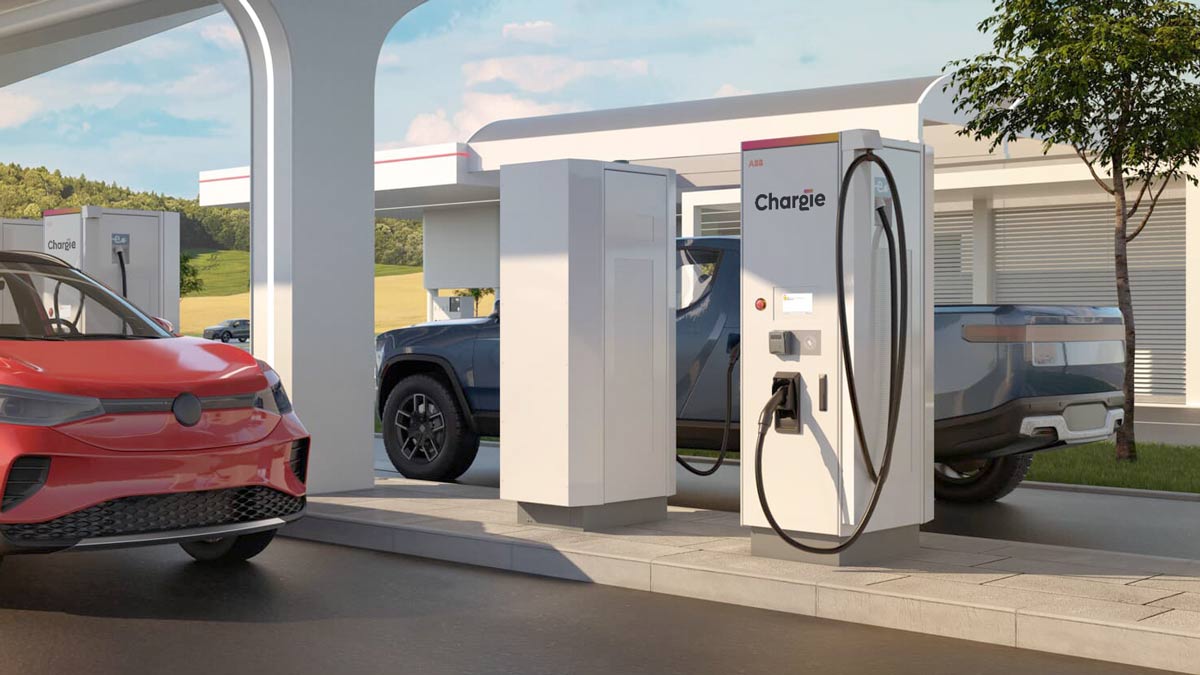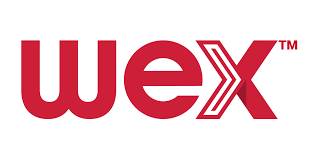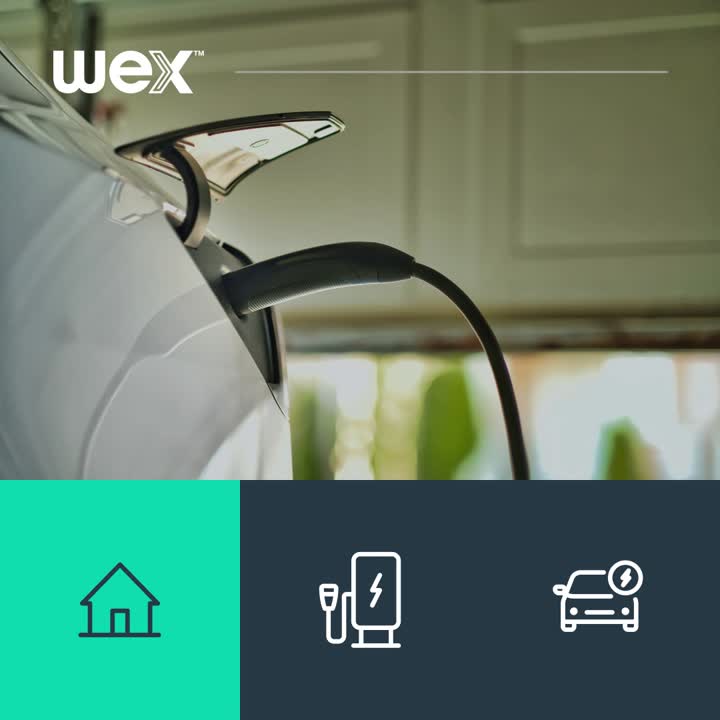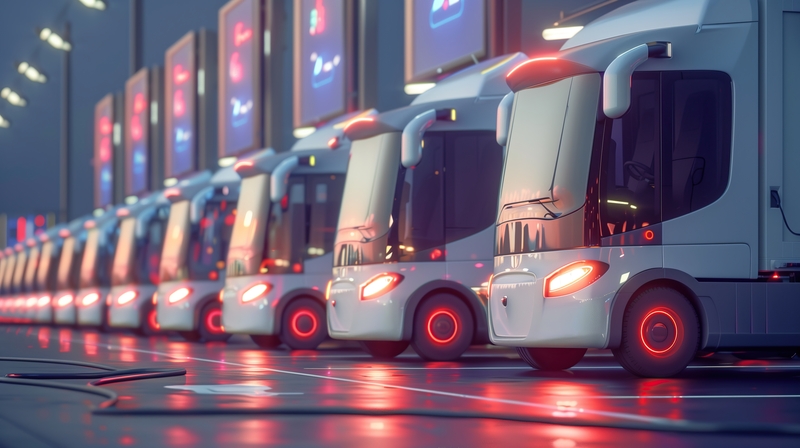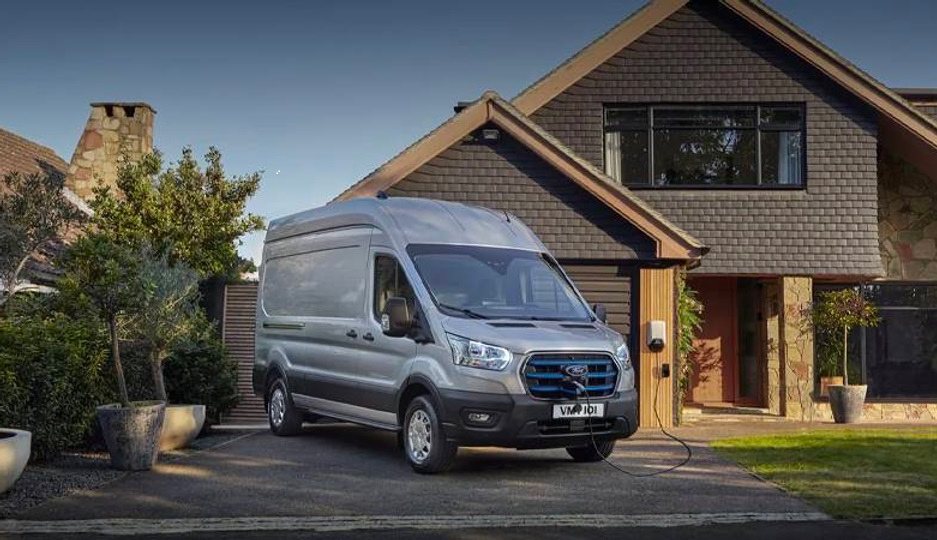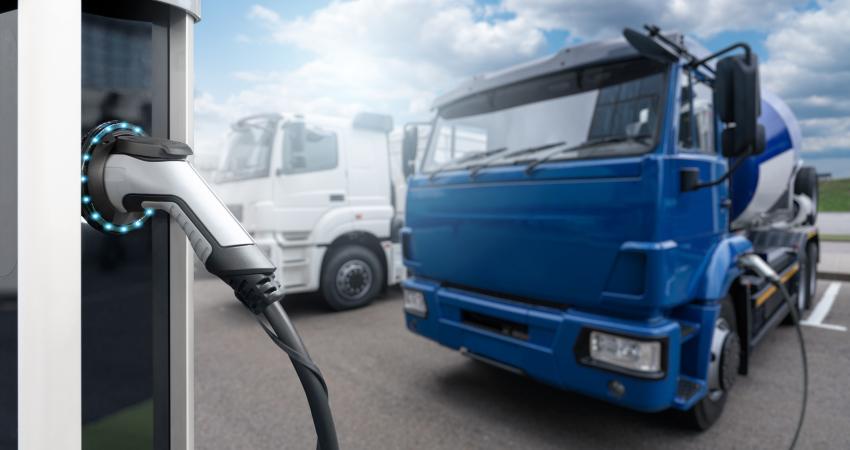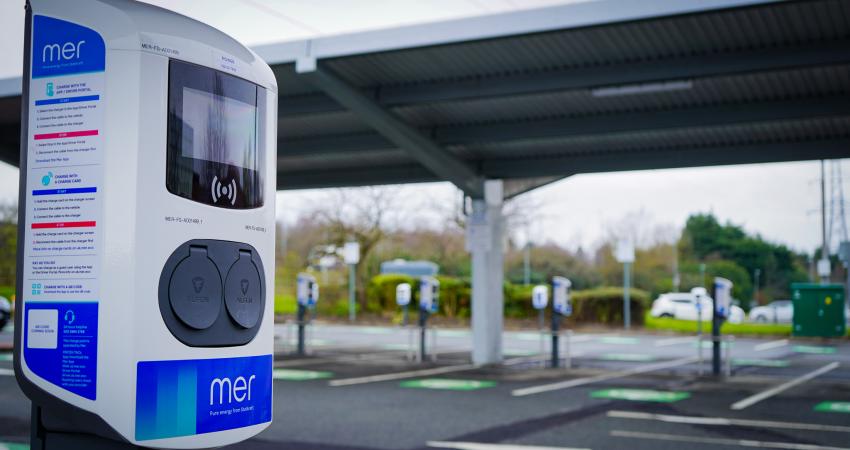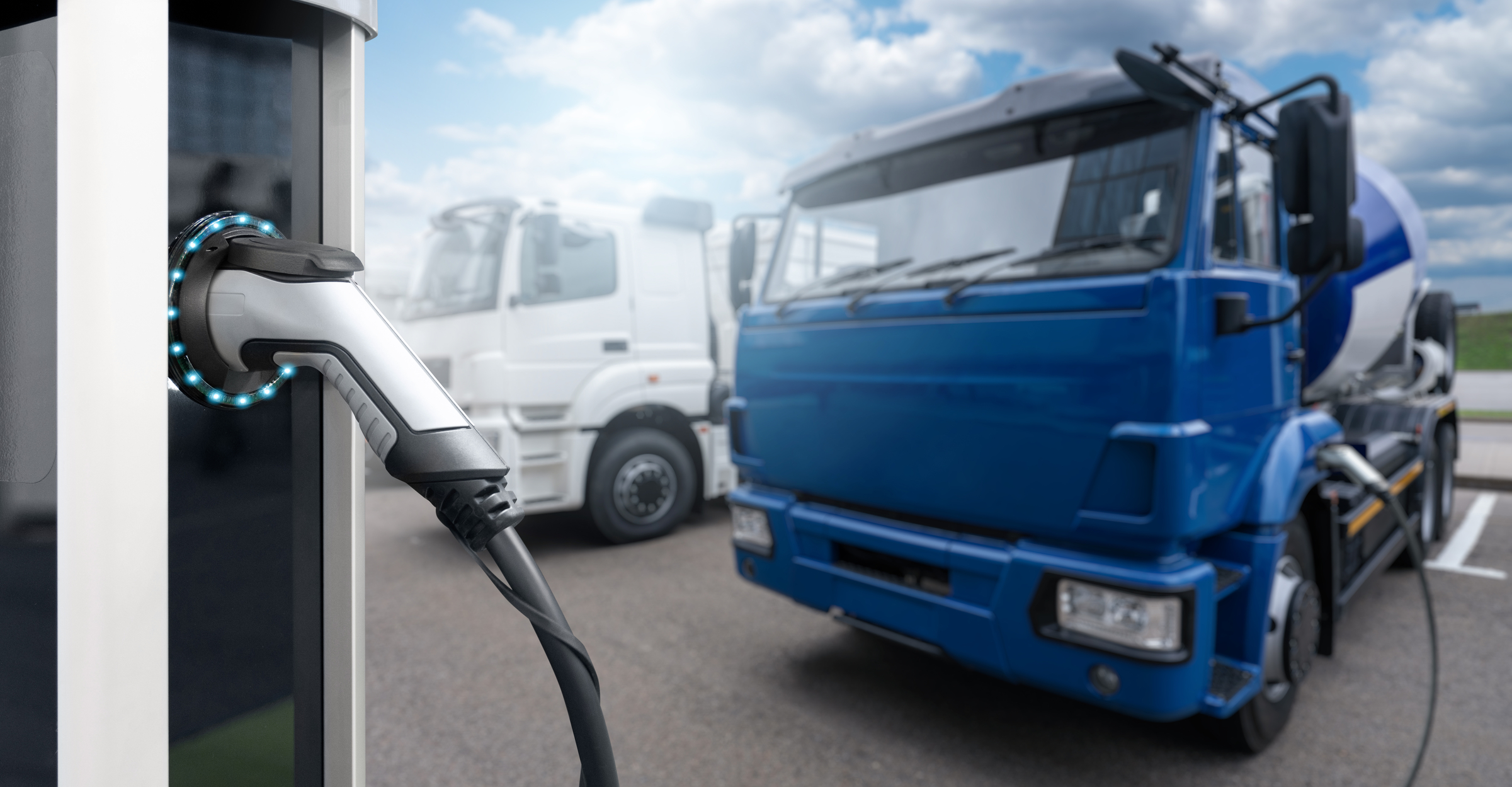
The Frost & Sullivan study, commissioned by global commerce platform WEX, found that 80% of mixed-energy fleet operators intend for at least 25% of their fleets to be comprised of electric vehicles (EVs) by 2030 and 42% stated that half or more of their fleet would be composed of EVs by 2030.
The survey - “The Commercial EV Transition: Global Insights on a Mixed-Energy Fleet Future” - offers insights for organisations to navigate and capitalize on the shift to electrification in Europe, North America, and Asia-Pacific. The transition to a mixed-energy fleet – which integrates both EVs and ICE vehicles – is not a one-time switch but a gradual process. Adoption rates for EVs can vary significantly depending on factors such as the region, industry, and an organization’s scope and size. Understanding the underlying dynamics can be crucial for optimizing operations and achieving long-term benefits.
The movement towards sustainability and decarbonization comes as businesses with fleets of commercial vehicles face pressures from governments, customers, and value chain partners to improve their environmental footprint. Frost & Sullivan’s research underscored these trends, with 70% of respondents noting that decarbonization was either an “important” or “cornerstone” component of their business strategy.
Top drivers for fleet electrification
The electrification of commercial vehicle fleets offers businesses significant benefits, from cost savings to environmental impact reduction, prompting many to switch their delivery vans, trucks, and other commercial vehicles to EVs. The top drivers in the survey for adopting EVs were to reduce carbon emissions, meet decarbonization goals, and realize cost savings, though the segment of very large fleets ranked cost savings and total cost of operation (TCO) as more important than carbon-related drivers.
Top 10 drivers for fleet adoption of EVs ranked
1 Reducing carbon emissions
2 Meet decarbonization goals
3 Cost savings
4 Advancements in battery technology
5 Brand image/reputational risk
6 Lower EV buying/operating costs compared to ICE
7 EV charging costs are lower than ICE fuel
8 Expansion of charging network
9 Competitive advantage
10 Government policies
Source: Frost & Sullivan
The heavily intertwined goals of reducing carbon footprint overall and meeting decarbonization goals were the leading reasons that businesses and government entities were adopting EVs. Many organizations have set ambitious environmental targets to control their carbon footprints. For example, in the US, Amazon has already installed 17,000 EV chargers as it embarks on a multi-year program integrating 100,000 Rivian electric vans, and major carrier FedEx plans to convert its entire pick-up and delivery fleet to EVs by 20403. In Europe, businesses as diverse as IKEA and Deutsche Post DHL are pledging to electrify large swaths of their fleets.4 Fleet operators view these commitments as necessary to align with public sentiment towards sustainability and help ensure their businesses remain compliant with expanding government mandates.
The emphasis on decarbonization was strongest with businesses with larger fleets — from 14% to 23% of medium to very large fleets stated decarbonization was a cornerstone strategy, as opposed to 8% or fewer of small to very small fleets. Overall, however, nearly two-thirds (63%) of fleet managers specifically noted they had a low-carbon goal they needed to achieve by or before 2030.
“Organizations know EVs can benefit commercial fleets, but electrification is a gradual process that involves more than just vehicle replacement,” said Carlos Carriedo, chief operating officer, Americas payments & mobility at WEX. “This report’s findings indicate a fleet manager’s focus isn't on 'if' or 'when' to transition but on 'how best.' A key strategy is recognizing the value of mixed-energy fleets for a smooth and effective shift to electrification.”
"Operators will maintain a mix of traditional and electric vehicles for the foreseeable future, introducing complexities in operations, infrastructure, energy sourcing, and payments,” Carriedo continued. “A mixed-energy fleet approach mitigates risk, allowing businesses to adapt, learn, and, if they desire, transition fully to electric mobility when the infrastructure is ready."
Key findings in the report include:
- Decarbonization is the key driver of the transition: 70% say it is an “important” or “cornerstone” component of their business strategy, and only 3% are not considering decarbonization at all. This underscores its importance to organizations’ strategies for cost savings, sustainability, and brand image.
- Operational efficiency is paramount during the transition: Despite electrification challenges such as high upfront costs (64%), 50% of surveyed organizations have already invested in charging infrastructure.
- Streamlining charging and payments is crucial: A substantial proportion (78%) of organizations have charging on-site, though charging en-route and at home were also widely used. Ninety percent of fleets have the same payment options for Internal Combustion Engine (ICE) and EVs. Dual ICE/EV payment card availability ranks as the top influencing factor when choosing a payment card.
- Smart digital solutions could help future-proof fleets: Over half of the respondents (58%) struggle with route planning, while 49% struggle to collect data, and 40% face challenges integrating fleet management software for ICE vehicles and EVs.
“The findings indicate that while the transition to EVs is underway, it's not without challenges. With 78% of fleets charging onsite and 62% using public facilities, issues like identifying the best use cases, the best vehicles for those use cases, and the best charging strategies for those vehicles across a complex public and private infrastructure are significant," said Jay Collins, SVP & GM, EV & Mobility at WEX. "The mixed fleet adoption strategy enables businesses to acclimate to the nuances of EV integration gradually, ensuring operational efficiency throughout the transition period."
The report also highlights the broader industry implications, noting that the top three challenges for fleet operators are the cost of fuel (67%), operational costs (66%), and profit margins (59%). These challenges reflect fleet managers' pressures to manage expenses and maintain profitability while transitioning to new technologies and sustainable practices
EV fleet integration
Along with balancing investment considerations, effectively deploying mixed-energy fleets presents fleet operators with operational hurdles (Figure 2). Route planning and optimization topped the list of fleet integration challenges due to differing fuel stations and charging locations.
Transitioning to alternative energy sources is fundamentally different from managing ICE fleets and introduces a higher level of operational complexity, “ranging from maintaining and retrofitting depots to managing logistics like planning and dispatching,” according to van Dijk. “Running an electric fleet is fundamentally different from its diesel and petrol predecessors. You need charging infrastructure, accurate energy demand predictions, optimized routes, and en-route charging support. Companies like Chargetrip offer operational intelligence to electric fleets worldwide, providing an API with intelligent EV-based routing for all EV makes and models, a global database of charging stations, detailed emissions reporting, and other features.”
“The planning complexity for fleet managers increases substantially when you add EVs to your fleet: it’s not just optimizing vehicle utilization anymore, but also optimizing charger utilization,” says Sarah Booth, director of strategic business operations at Sawatch Labs, a WEX company, which provides fleet electrification analysis. Battery state of charge, battery pre-conditioning schedules and charging rate data can all introduce new data streams to fleets that go beyond traditional ICE norms. As such, data consolidation and analysis across vehicle types were also deemed to be difficult and limited a business’ holistic fleet oversight.
Without unified analytics, EVs’ distinct operational profiles can obscure data-driven decision-making and hinder the optimization of routes and en-route charging support. Integrating new EV vendors and software alongside existing ICE systems creates administrative challenges for fleet operators. As electrification grows, solutions consolidating vendor management and unifying operations across all vehicle powertrains will be essential to overcoming these integration challenges.
Smart payment systems streamline fleet transitions
Tackling the various financial, technical, and behavioral changes required to transition fleets from ICE to mixed-energy fleets of ICE, hybrid, and EV can seem daunting.
However, new solutions are helping fleets and drivers pay for mobility expenses like fuel, charging, and vehicle maintenance all within one system. For example, specialized fleet payment solutions such as fleet cards can provide a centralized platform for funding and tracking both ICE fuel purchases and EV charging. These cards authorize fuel transactions and consolidate costs into centralized billing and reporting systems. Key benefits include an improved driver experience, moving them (and their fleet managers) away from managing receipts and expense reports.
Providing managers with data-driven visibility into overall fuel and charging expenditures is another significant benefit. For businesses and government entities with commercial vehicles, consolidated payment solutions provide vital capabilities:
Streamlined authentication and access control: Fleet cards encoded with unique identifiers let drivers efficiently authorize and activate EV charging sessions via RFID or mobile apps across fragmented charging networks, both public and private facilities, providing a seamless charging experience anywhere vehicles operate.
Detailed transaction data: Real-time tracking of all charging sessions delivers robust analytics around energy consumption metrics. This aids in proactive renewable energy procurement, optimized vehicle deployments based on range needs, and right-sized site charging infrastructure over time.
Consolidated utility billing: Processing numerous charging-related utility bills across complex rate structures consumes considerable back-office resources. Intelligent payment platforms streamline all procurement into integrated invoicing.
Intelligent payment platforms streamline all procurement into a single system for invoicing, auditing, and accounts payable workflows, reducing administrative overhead.
For drivers, adopting smart fleet payment tools for fueling and charging brings key advantages as well. Embedded payment credentials in fleet cards or mobile apps provide a simple, consistent way for operators to initiate and pay for fuel and charging without juggling multiple accounts, subscriptions, or payment methods across different networks. Fleet cards also aid in accurate expense tracking and submissions. Payment data is automatically captured for every fill-up and charging session, removing the headache of manually recording receipts or other documentation. This seamlessly integrates fueling and charging costs into overall fleet expense management.
About the survey
Frost & Sullivan interviewed 503 decision-makers at businesses with mixed EV and ICE fleets in 2024. The regional split for these interviews was as follows: France, 65 respondents; Germany, 60 respondents; Italy, 65 respondents; UK, 61 respondents; Benelux, 22 respondents; United States, 105 respondents; Australia, 60 respondents; New Zealand, 60. Fleet size definitions and corresponding respondents were: Very small fleets 2-4 vehicles, 101 respondents; small fleets 5-49 vehicles, 114 respondents; medium fleets 50-99 vehicles, 116 respondents; large fleets 100-499 vehicles, 115; very large fleets, 500 vehicles or more, 57 respondents.


